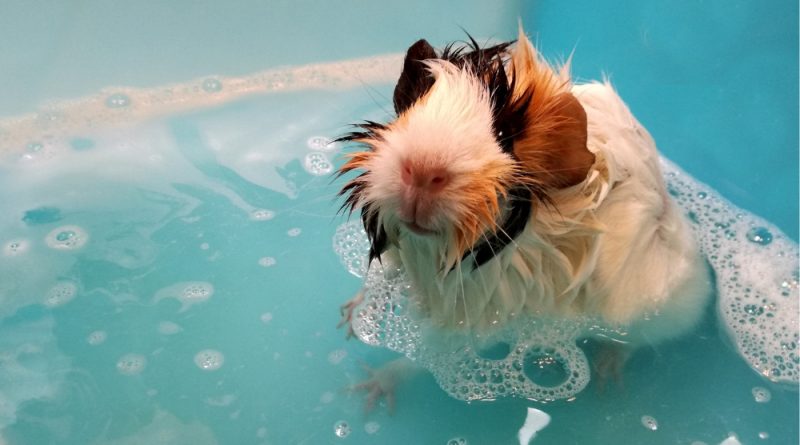All about ozone bath for your pet
In this article, you’ll learn all about ozone baths for your pet in a simplified manner. For those who are always tuned into therapeutic techniques, ozone therapy for dogs is not a novelty. Since 2018, when it was approved by the Federal Medical Council for experimentation in humans, the technique has also gained the trust of pets.
They can benefit from ozone therapy to assist in the treatment of various diseases! Discover more about the procedure!
What is ozone therapy in dogs?
Although it only gained popularity among Brazilians more recently, the history of ozone therapy began in Germany in the 19th century to combat the action of skin bacteria.
According to articles published in the English journal The Lancet, doctors in Germany and England were already using ozone therapy, mainly to treat wounded soldiers during World War I, around 1916.
The technique relies on the therapeutic use of ozone gas, which is capable of combating viruses, fungi, and bacteria. It also stimulates the immune system’s action and improves tissue perfusion.
How does ozone therapy work in dogs?
Ozone (O3) is a very unstable gas. It forms between 15 to 50 km above the Earth’s surface in the stratosphere when UV rays hit oxygen (O2).
To simulate this reaction and produce medicinal ozone, an apparatus that generates electric discharges in oxygen is used. This results in a mixture of 95% oxygen and 5% ozone.
Since ozone is toxic if inhaled by humans and animals, the ozone generator must be a very safe device. And, as the molecule is unstable, it should only be produced at the time it will be used.
Thus, it lasts only half an hour if left at room temperature. You are probably wondering how a poisonous gas can be used in treatment?
It works like this: because it is an unstable gas, ozone quickly reverts to oxygen (the six atoms of two ozone molecules form three oxygen molecules). This oxidation reaction releases free radicals, which, in turn, help fight infectious agents such as bacteria and fungi.
But then arises a second question: aren’t free radicals themselves harmful to health?
In theory, yes. However, according to ozone therapy advocates, the body perceives oxidation and stimulates the body’s natural antioxidant processes. Thus, the technique would be capable of improving immunity, as well as having anti-inflammatory and analgesic effects.
What is ozone therapy used for?
But after all, what is ozone therapy used for? In humans, ozone therapy is used as a complementary therapeutic resource in treatments. It can work from cancer to chronic pain and inflammation, through wounds, burns, and vascular problems.
With pets, the idea is the same! In veterinary medicine, in addition to ozone therapy in dogs with cancer, the technique is also used for:
- Arthritis and osteoarthritis
- Colitis
- Herniated disc
- Urinary infections
- Ulcers
How is ozone therapy applied in dogs?
The application of ozone therapy in older dogs, adults, and puppies is quite similar to that performed in humans and occurs in the following ways:
- Intravenous (a small amount of blood is taken from the patient, treated with ozone, and returned to circulation)
- Hemotherapy (blood treated with ozone is applied via intramuscular injection)
- Topical (the part of the body to be treated is placed in a kind of bag, where ozone circulates, or distilled water or olive oil previously treated with ozone is applied to the affected area as a compress or spray)
- Rectal insufflation (without mixing, medicinal ozone is absorbed by the intestinal mucosa)
- Intra-articular or intradiscal
As with ozone therapy for humans, only a healthcare professional can determine the best way to administer the treatment.
Is veterinary ozone therapy recommended?
The Brazilian Association of Ozone Therapists (Abo3vet) is seeking regulation of ozone use as an experimental and complementary treatment from the Federal Veterinary Medicine Council (CFMV).
“The Code of Ethics for the Veterinarian clarifies that any treatment to be indicated for a patient must provide the necessary explanations so that the client is aware of the risks brought by the treatment to their animal. Since ozone therapy has not yet been properly tested and proven, there is no way for a professional to alert their clients to possible risks,” said CFMV in a statement.
In December 2018, Abo3vet sent 300 articles to CFMV to support the positive results of the technique, accompanied by various case reports.
Now, the association will present proposals for protocols and terms of agreement from the guardian, which will have to make it clear which animals are eligible for the procedure and that it is a clinical experiment. The discussion will then go to CFMV’s plenary, which should issue a resolution with the agency’s position.
According to Abo3vet, about 1,500 veterinarians work with ozone therapy in Brazil, and there are many reports of successfully completed treatments, but there is no training recognized by CFMV.
Liked the article “All about ozone bath for your pet“? Share it with your friends and acquaintances and stay tuned because we will have even more news soon, follow along!




